South Dakota Birding Hotspot
Gavin's Point Dam
Yankton County
| Click on points to view actual ground photos and birding information for those locations. Use the Google tools to switch between road maps, terrain, or satellite images. |
Directions:
Gavin's Point Dam is about 4 miles west of Yankton. Simply take Highway 52 west out of Yankton, and you'll see a turn to the south which takes you across the dam itself, to the Nebraska side of the river and Reservoir.
Geographic Coordinates: 42° 51' 45" N, 97° 29' 7" W (coordinate at center of Gavin's Point Dam).
Description:
Gavin's Point Dam is a mile and a half long structure along the Missouri River, on the Nebraska/South Dakota border, about 4 miles west of Yankton, South Dakota. The dam forms Lewis & Clark Reservoir, which itself is about 16 miles long and 2 to 2.5 miles wide. Gavin's Point Dam is the furthest downstream (last) of the series of large dams along the Missouri River, and was designed to control water levels for navigation downstream, but other uses include to control flooding, generate electricity, and provide recreational opportunities.
From a birding standpoint, the area offers a diverse array of habitats. The vast open water of the reservoir and the year-round open water below the dam attract a variety of water-loving birds, including the opportunity for rarities seldom seen in South Dakota. Wetland areas around Lake Yankton (below the dam) offer habitat for marsh birds, while forest areas along the Missouri River bluffs and around Lake Yankton offer great habitat for woodland species.
Points of Note (Click on markers on the map to see closer images of the locations):
A trip to the Gavin's Point Dam area should always include a stop below the dam, in the tailwaters of the Missouri River (Point 1 on the map below and to the right). Interesting birds may be found at all seasons, but it's the late fall and winter that often are the best from a birding standpoint. As with other Missouri River reservoirs in South Dakota, the Gavin's Point Dam area offers the possibility of seeing some true rarities in the state, particularly gulls and waterfowl. As temperatures plummet and other open water in the area freezes over, the constant stream of open water below the dam attracts large numbers of Bald Eagles, attracted by not only the open water, but the stunned baitfish that pass through the dam. Take a trip to the area in December through February, and there's one particular Cottonwood tree (see point 1) on the Nebraska side where I can almost guarantee you'll find a Bald Eagle (or two, or three, or 12), and in all likelihood, it could be the closest you ever come to a wild eagle in your lifetime. From the sidewalk adjacent to the tailwaters on the Nebraska side, you can view what is at times frenzied bird activity in the late fall, with eagles, gulls, and waterfowl searching for food, especially just as most of the water on the main lake and around the area has started to freeze over. Stand on this sidewalk on a winter's day, and you may very well have Bald Eagles cruising the tailrace waters in front of you, right at eye level and within spittin' distance (or so it seems). This area is also one of the best locations in the state to find Osprey (in the fall), even before they started raising and releasing Osprey in this area. Be sure to scan the waters and skies in this area for rarities, as you never know what gull or waterfowl species may show up. This area even hosted a wayward Brown Pelican a few years ago.
Lake Yankton (Point 2), on the South Dakota side below the dam, is another great place to look for waterfowl. It seems there are often often patches of water, even in winter, making it another place that's attractive for water birds. On the eastern side of Lake Yankton is Chief White Crane Recreation Area (Point 3). There are many campsites scattered throughout, but there's also some very nice thick forest that can be quite good for woodland species. This area is closed to motor traffic in the winter, to reduce disturbance to Bald Eagles on day roosts, but you can walk through the area. Point 4, on the western side of Lake Yankton, is another good spot to bird. There's a lot of wetland vegetation here, and it's over in this part of the lake where there's most often open water in the winter.
Another good place to look for gulls and waterfowl is the Marina, on the northeast corner of Lewis and Clark Reservoir (Point 5). The structure protecting the marina seems to be a favorite place for gulls to hang out, and there are often waterfowl just off the jetty, or sometimes in the marina itself.
One final place I always check is on the Nebraska side, west of the visitor's center (Point 6). As you take the road past the visitor's center, the road will turn south, and go towards a golf course. Just before getting to the golf, course, turn right. This little road goes through an open grassy area on the right, that's been one my most reliable spots for finding Eastern Bluebirds. As you head towards a parking area overlooking the lake, you'll pass scattered cedar trees and brush, areas that have been great in migration for me at times. At the parking area, you can take a trail which heads down through the forest. It's a nice area to look for woodland species.
Birds of Note:
The big draw for birders in the Gavin's Point Dam area is probably the Bald Eagles which can be so numerous below the dam in late fall through the winter months. The steep bluffs rising up from the south side of the river have a thin strip of trees between the road and the water below the dam, and those trees are favorite hangouts for the eagles as they scan the water below for an easy meal. Especially in the fall, the Bald Eagles have competition from Osprey. Recently, Osprey have been raised in special towers on the shores of Lake Yankton, areas where young birds are raised and released in the fall.
I've had good luck for other raptors below the dam as well. I've seen both Cooper's Hawks (summer) and Sharp-shinned Hawks around Lake Yankton, and while walking through the Chief White Crane Recreation Area, I've twice come across adult Northern Goshawks. Red-tailed Hawks are also commonly found in the trees below the dam. Snowy Owls have been spotted on the dam itself in the winter (unfortunately, not by me!!).
Another big attraction for birders in the area is the potential for rare gulls. The biggest congregation of Gulls I've ever seen in my life was one December, on Lewis and Clark Reservoir just above the dam. Nearly all the water above the dam was frozen, except for a ring of open water about 300 yards across. There was some kind of fish kill, with dead fish ringing the open water, and thousands of gulls taking advantage of the feast. As in much of South Dakota, most of the gulls in the area are Ring-billed Gulls. However, as with the other Missouri River dams, you never know what rarity may show up. Other gulls I've seen by the dam are Herring Gulls, California Gulls, Franklin's Gulls, Bonaparte's Gulls, Lesser Black-backed Gull, Glaucous Gull, and Black-legged Kittiwake.
Waterfowl, including the potential for rarities, is another big attraction to the area. Common Loons are often found here in migration, and a Red-throated Loon was also once spotted here. Common Mergansers are indeed common below the dam in winter, and scanning the water may also reveal scattered Red-breasted Mergansers, especially in migration. Common Goldeneye are another common species around the dam in winter, while not-so-common species have included Long-tailed Duck, White-winged Scoter, and Surf Scoter in migration. A Red-necked Grebe has been spotted above the dam (marina area), and there has even been a visiting Brown Pelican, as mentioned above. If you're one who is inclined to chase the rarities, the Gavin's Point Dam area is definitely worth your time.
The forest and open areas away from the water can also be very good for birding. The area near the visitor's center (on the Nebraska side) has been my most reliable place to find Eastern Bluebirds, and there have now been a couple of times where Mountain Bluebirds have been reported in the area in winter. Cedar trees are common in the bluffs and draws on the south side of the river, and with heavy berry crops often comes large influxes of migrants and wintering birds. The cedar trees on the Nebraska side are one of the most reliable places I know of to find what are often an unreliable and nomadic species, Cedar Waxwings. The forests in Chief White Crane Recreation Area and around point 6 (above) on the Nebraska side have yielded Scarlet Tanager, Rose-breasted Grosbeak, Indigo Bunting, Eastern Towhee, and many other typical "eastern forest" species. One thing that always manages to warm my heart, even in the dead of winter, are the large numbers of American Robins that always seem to be around, even in the coldest of weather.
There are times when activity below the dam is incredible, with gulls, waterfowl, and eagles seemingly everywhere. And there have been times when activity in and around the water has been extremely slow, including times when you're hard-pressed to find a single gull. However, given the diversity of habitats in the area, I never come away empty-handed on a trip to the area, as slow days near the water are often compensated for by big days in the upland areas on the Nebraska side of the dam, or in the forests of Chief White Crane Recreation area.
Other Birding Locations (sorted by distance):
- North Alabama Bend (~45 miles)
- Newton Hills State Park (~70 miles)
- Western Minnehaha County (~70 miles)
- Wall Lake / Dewey Gevik (~80 miles)
- Outdoor Campus in Sioux Falls (~85 miles)
- Good Earth State Park (~95 miles)
- Big Sioux Recreation Area (~100 miles)
- Beaver Creek Nature Area (~105 miles)
- Madison Waterfowl Production Area (~100 miles)
- Lake Thompson Area (~120 miles)
- Dakota Nature Park, Brookings (~135 miles)
- Presho Area (~185 miles)
- Fort Pierre National Grasslands (~220 miles)
- Pierre/Oahe Dam Area (~240 miles)
- LaCreek National Wildlife Refuge (~250 miles)
Bird Photos from Gavin's Point Dam |
||
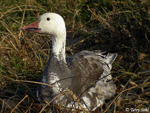 |
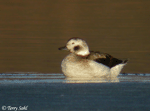 |
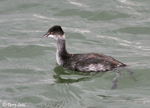 |
| Snow Goose | Long-tailed Duck | Eared Grebe |
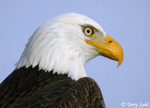 |
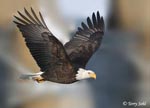 |
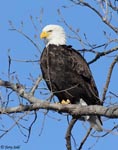 |
| Bald Eagle | Bald Eagle | Bald Eagle |
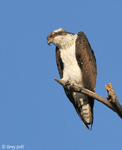 |
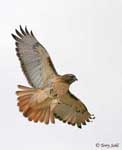 |
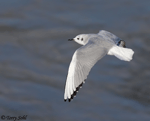 |
| Osprey | Red-tailed Hawk | Bonaparte's Gull |
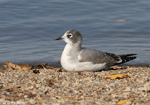 |
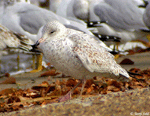 |
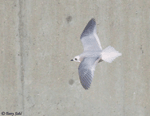 |
| Franklin's Gull | Ring-billed Gull | Ross's Gull |

